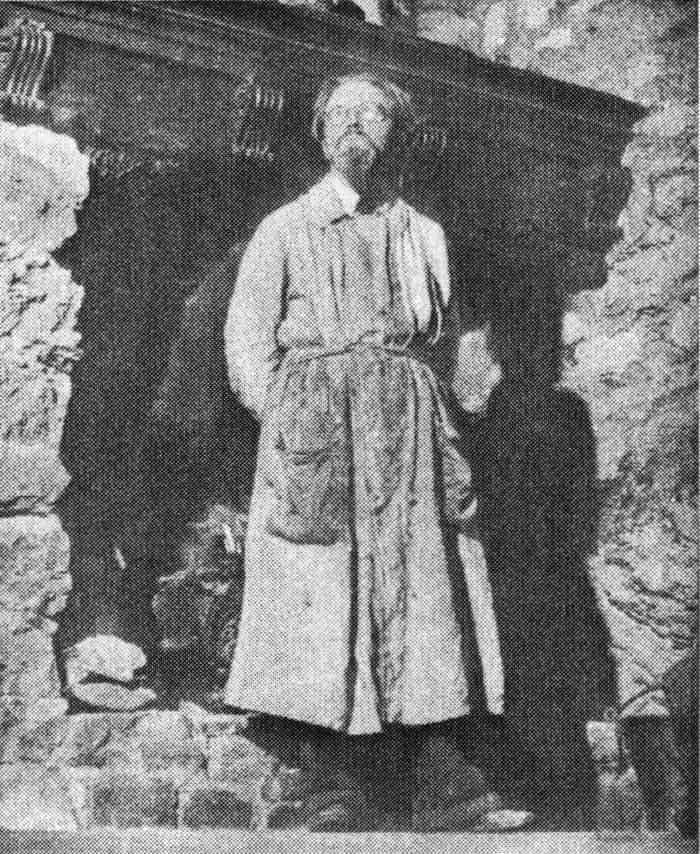Justus Jorgensen
 Justus Jorgensen in 1939
Justus Jorgensen in 1939
Justus Jorgensen (1893-1975), artist, was born on 12 May 1893 at East Brighton, Melbourne, third of six children of Simon Jorgensen, a master mariner from Norway, and his Victorian-born wife Nora, née Schreiber. Sent to a convent kindergarten and a local school, Justus was articled to his uncle, the architect Robert Schreiber, and qualified as a draughtsman. After working briefly in a government office, he learned painting at the National Gallery schools in 1915-17. He later joined Max Meldrum and soon became his assistant.
On 1 May 1924 at St Francis's Catholic Church, Melbourne, Jorgensen married Lilya Smith, a medical student. They lived in France and England in 1924-28. While in London, Lily completed her degree and took work as an anaesthetist to support her husband. On their return to Australia in March 1928, they bought a house at Brighton and Jorgensen taught in a studio that he built in the grounds. In 1932, having broken with Meldrum, he took a city studio in Queen Street. Although he painted throughout his life, and taught for many years, he exhibited only three times: in 1929, 1930, then jointly with Colin Colahan in 1934. Jorgensen detested the commercialism of exhibitions, mistrusted the judgement of critics and the public, and was reluctant to relinquish his canvases to buyers.
In 1935 Lily bought land at Eltham and, with the assistance of friends and students, Jorgensen built a studio, students' quarters and a three-storey Great Hall. These buildings formed the nucleus of an artists' colony. The Great Hall, which Jorgensen described as 'gothic', was built of local mudstone; fittings such as carved stone windows, hammer beams, gargoyles and huge stone fireplaces were supplied by Whelan the Wrecker'. Over the years the hillside on which the hall stood was covered by a series of lesser buildings, often mud-brick or stone, which reflected the influence of French provincial architecture. He named the settlement Montsalvat.
There, Jorgensen gathered around him a group of friends and followers. He gave them the opportunity to learn to paint and to master the crafts connected with his building?carpentry, sculpture, metalwork, tiling and slating. He also offered them the chance of a freer, more meaningful life?a measure of heightened self-knowledge and the possibility of happiness, including sexual fulfilment. About the time of the birth of his and Lily's son Max, Jorgensen had begun an affair with one of his followers Helen Skipper. This relationship lasted for the rest of his life, produced two sons, Sebastian and Sigmund, and occasioned some notoriety in suburbia and the press.
Jorgensen's fame rested less upon his paintings than upon the creation of Montsalvat, its colony of painters and craft-workers, the philosophy of art and life which he expounded there and the influence which he exercised upon many who called at Eltham. In provincial, postwar Melbourne a visit to his city studio, or his room at the Mitre Tavern, or?for the elect?an invitation to dinner at Eltham were stimulating ventures for inquiring minds. In his company a gamut of ideas was discussed, ranging from psychoanalysis, philosophy and theories of art to views on love and marriage. Many Melburnians tarried and moved on, but were profoundly affected by his contrast between 'the bourgeois world' and a life free of materialism, oppression and prurience.
The social structure at Montsalvat was feudal; Jorgensen dominated as the master. A number of his followers tired of his autocratic rule and left. In the face of soaring costs, Montsalvat was opened to the public in 1963. Justus himself became increasingly private, concentrating upon self-portraits, shown only to a few. In 1971 Sigmund staged an exhibition of his father's works in the Great Hall. Survived by his wife and his sons, Justus Jorgensen died on 15 May 1975 at Upper Fern Tree Gully and was buried in Eltham cemetery. His estate was sworn for probate at $149,101. In accordance with the provisions of his will, Montsalvat was administered by a trust and continued as an artists' colony and function centre.
Max Teichmann
Australian Dictionary of Biography, Volume 14, (MUP), 1996
